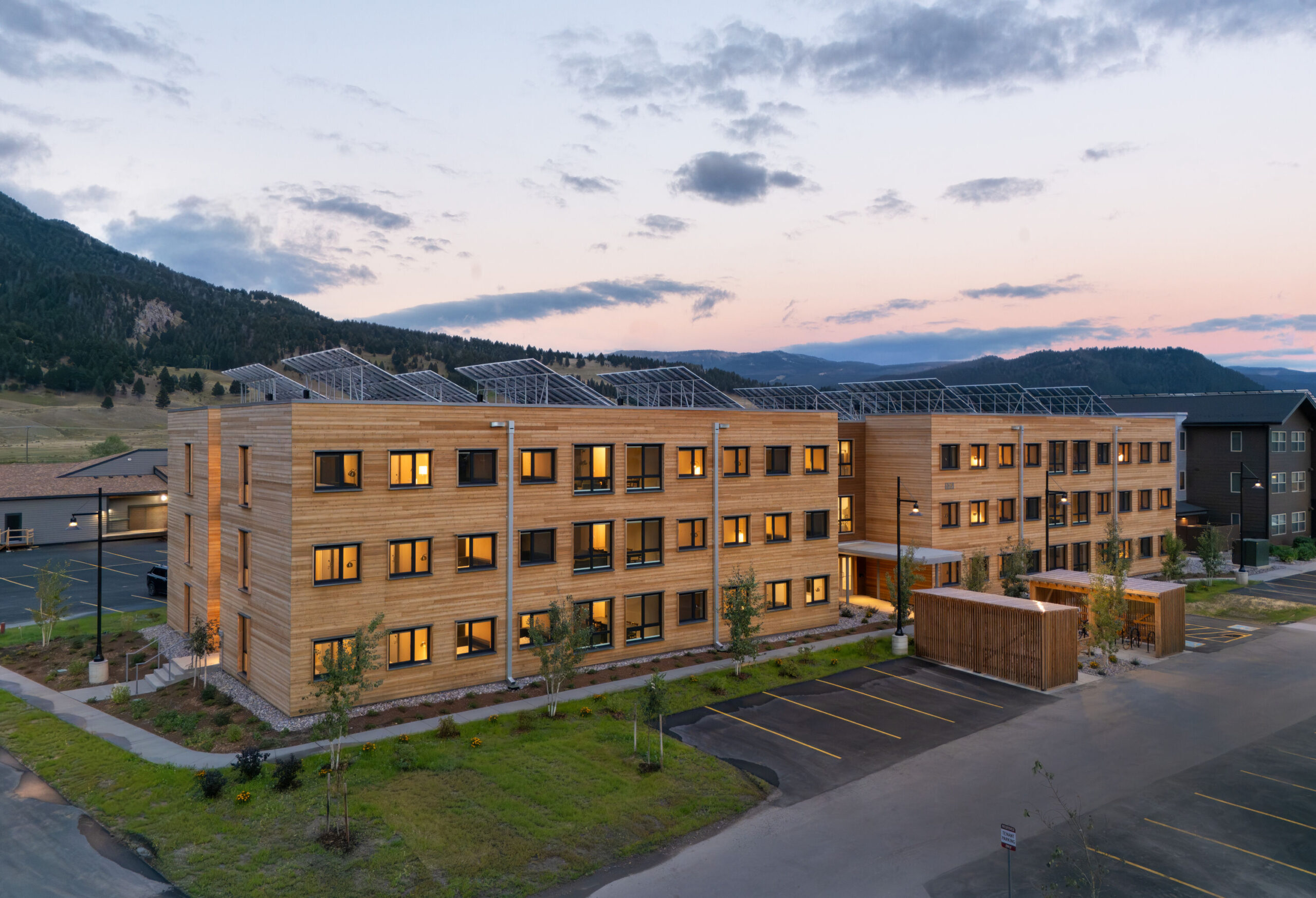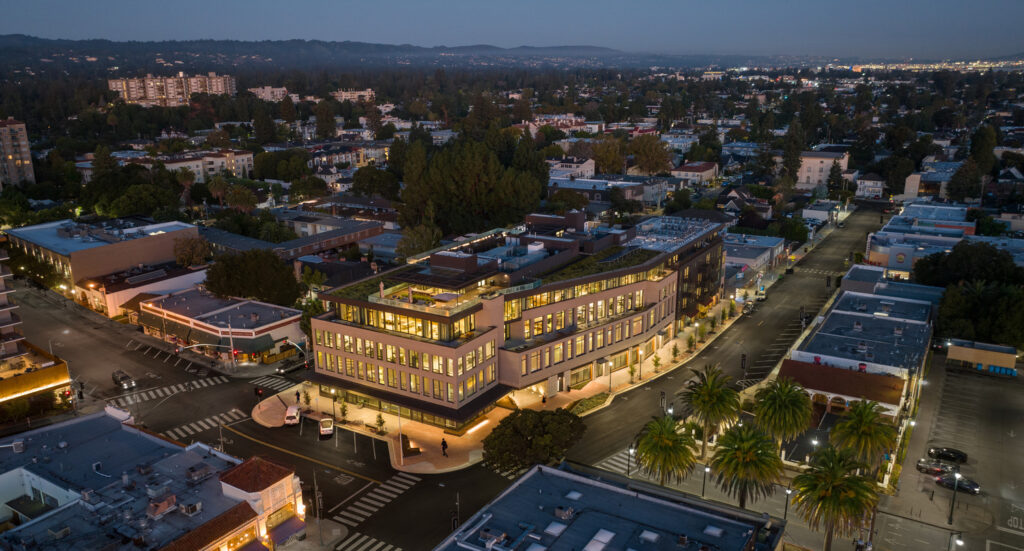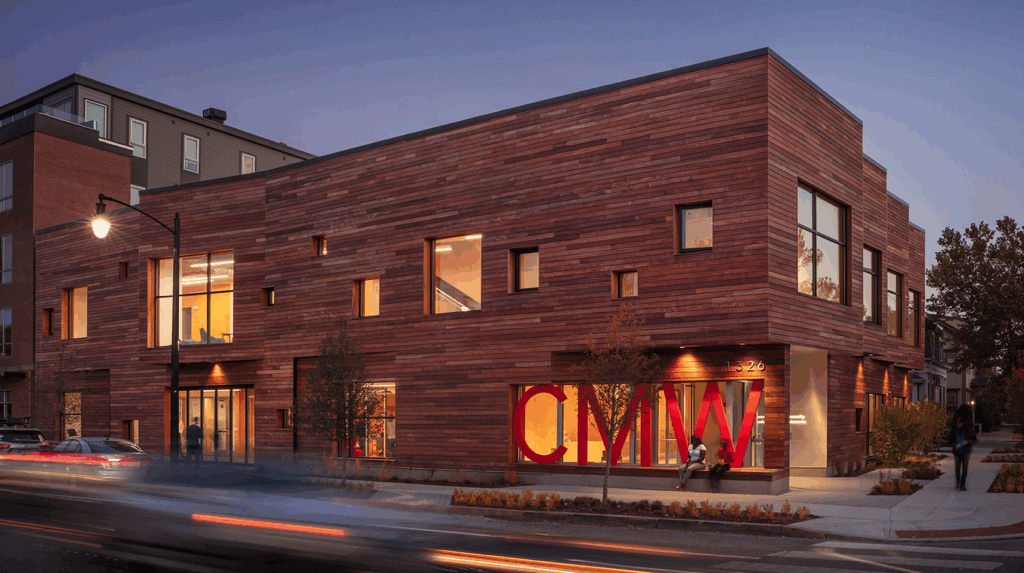Mass Timber, Multifamily
D.C.’s Largest Mass Timber Multifamily Building Will Put Wood on Full Display
The building in the upcoming Bridge District development celebrates wood by leaving timber columns and ceilings exposed behind glass.
A building designed to be the largest mass timber residential project in Washington, D.C., has been approved by the city’s planning department. New York-based architecture firm ODA is currently designing a two-building complex that comprises Phase 2 of the new Bridge District development in Washington, D.C.’s Anacostia neighborhood. Located less than two miles southeast of the United States Capitol, the buildings will sit on the south side of the Anacostia River, close to the Frederick Douglass Memorial Bridge.
Working with D.C.–based developer Redbrick LMD, ODA designed Building 1 with a mass timber frame and Building 2 with a conventional concrete frame. Between the two buildings, this phase of the complex will include 976 residential units and parking for 360 cars. Both buildings will hold 11 stories of apartments atop a concrete base filled with parking and amenities. ODA is completing construction documents while the local building department reviews the project.
The developer and design team for the overall Bridge District “aim to improve the health and wellbeing of Bridge District residents and the local community,” according to ODA founding Principal and Executive Director Eran Chen. And an important part of the firm’s strategy includes creating sustainable environments using mass timber, which is why it is slated for one of the two buildings in the Bridge District. “We do expect to be building future multifamily buildings in mass timber. We bring in specific types of capital that value sustainability, and that’s one of the ways we differentiate ourselves in this realm,” said Thomas Skinner, Founder and Managing Partner of developer Redbrick LMD, while speaking at Bisnow’s “State of the Market” event in Washington, D.C., in June.

ODA Bridge District
Chen notes that in its research ODA looked at many timber buildings through history and “none of them look like timber buildings at all,” he says. “People just didn’t think that it’s important enough to design the building in a way that communicates that this is a special construction type.” ODA is taking a different approach with its design for Building 1, putting the mass timber on full display: The exterior envelope’s floor-to-ceiling glazing will expose the mass timber columns and wood ceilings from the street. “I think celebrating that structure through transparency is one step in the right direction,” Chen says.
ODA designed Building 1 so that 80% of the apartment units have a balcony. But crafting those balconies proved more challenging on the mass timber structure than the concrete one, Chen says, because “the attachment system [for mass timber] is limited; it has to be along the column line and it has to be either hung from the top with a cable or supported from the bottom with a tilted column.” ODA ultimately chose the latter and turned it into an opportunity to showcase a unique detail “because we felt it’s just a beautiful architectural element,” he says.
Chen notes that using mass timber for a multifamily building does come with challenges: The strict regimentation of beams and columns that is required to make mass timber competitive in price can be better suited to offices rather than residential layouts, and the placement of MEP services requires a higher level of coordination with a CLT building versus a concrete one. But the rewards can be worth it: “The price, the process, the timeline, are all risks,” Chen says. “We know that Building 1 [the mass timber one] is going to be about 15-20% more expensive to build than Building 2, but I think it’s a calculated risk [for] a developer to say, we want to move that needle.” And for Redbrick LMD, that market differentiation is key.

ODA Bridge District

Project Details
- Project Name:
- ODA Bridge District
- Location:
- Washington, D.C.
- Type:
- Architect:
- Timber Products:












